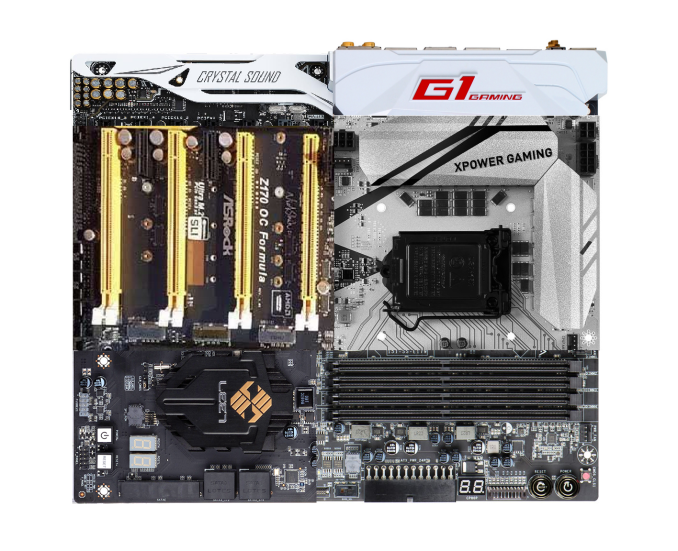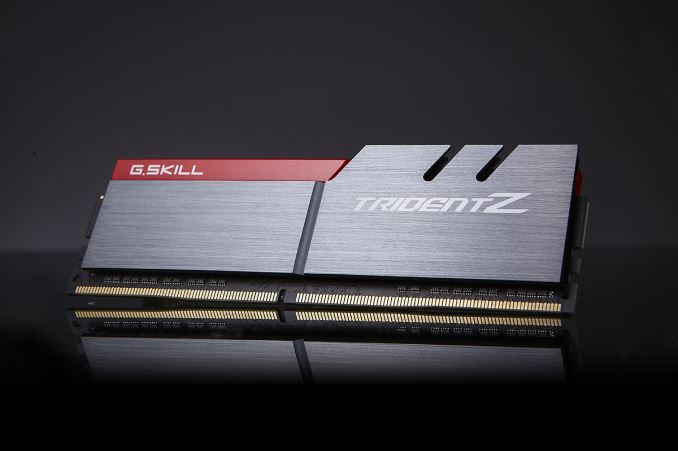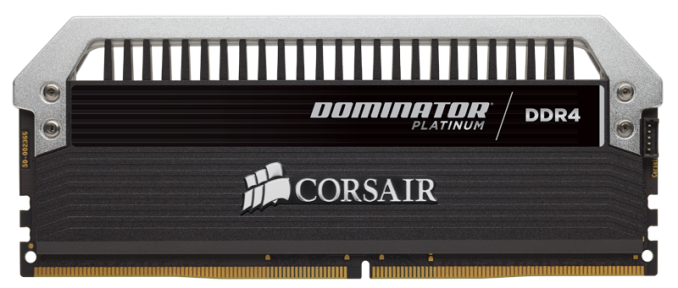The Intel 6th Gen Skylake Review: Core i7-6700K and i5-6600K Tested
by Ian Cutress on August 5, 2015 8:00 AM ESTAlso Launching Today: Z170 Motherboards, Dual Channel DDR4 Kits
The new Skylake processors are assigned a new socket – LGA1151. Intel’s policy since 2006 has been to maintain sockets for two generations and as a result moving from Broadwell to Skylake we were expecting the change. This means that Skylake processors will not work in LGA1150 based motherboards, i.e. those with Intel’s 8th and 9th generation chipsets. For Skylake we get the 100-series chipsets with additional functionality. Launching today in turn is the first member of the 100-series family, the overclocking-friendly Z170, with the other chipsets in the family to follow later in the year.
We have a large piece on the motherboards being released or talked about for Skylake, covering some 55+ products and the different variations within. The major motherboard manufacturers such as ASUS, GIGABYTE, ASRock, MSI, EVGA and a couple of others should all have a wide range ready to purchase on day one, although some models may be region specific.

The badly MSPaint’ed hybrid: MSI’s XPower Gaming Socket, GIGABYTE’s G1 Gaming IO panel, EVGA’s DRAM slots, ECS’s chipset, ASRock’s PCIe arrangement and ASUS’ Deluxe audio.
Here’s an amalgamation of some of the designs coming to end users, with almost all of them investing heavily in gaming brands with specific components to aid the user experience while gaming. Aesthetic designs are also going to be a focus of this generation, with some of the manufacturers moving into a different direction with their designs and trying some new color schemes. Some basic looking models will also be available.
Prices for Z170 motherboards will range from $80 all the way past $400+, depending on feature set and size. A number of motherboards above $150 will feature a couple USB 3.1 Gen 2 (10Gbps) ports, although you will have to check whether they are Type-A or Type-C. That being said, most motherboards with USB 3.1 will use both, but there are a select few that are C-only or A-only. Also over $150 we will see a lot of Intel’s new network controller, the I219-V, although the gaming lines might invest in Rivet Network’s Killer solution instead.
Intel is launching the Alpine Ridge controller at this time as well, which is said to support USB 3.1 Gen 2, Thunderbolt 3, HDMI 2.0, DisplayPort, and DockPort. According to our sources it would seem that GIGABYTE currently has an exclusive on this technology, and it will be used for their USB 3.1 Gen 2 ports on most motherboard models. Other functionality from the Alpine Ridge controller (TB3, HDMI 2.0) will be on a case-by-case basis depending on how the controller works in two different modes or if extra components are used. We are told that Alpine Ridge costs similarly to the ASMedia ASM1142 controller, but will enable two USB 3.1 Gen 2 ports at 10 Gbps simultaneously as it uses four PCIe lanes from the chipset.
We will go more into the 100-series chipset in the next page, but it is worth mentioning briefly here that the speed between the CPU and the chipset has increased from DMI 2.0 (5 GT/s, 2GB/sec) to DMI 3.0 (8 GT/s, 3.93GB/sec), and that the chipset has a new high speed hub (HSIO) that allows 26 lanes to be used from it although some lanes are limited (e.g. 20 PCIe 3.0 lanes maximum split into five x4 controllers). Intel’s Rapid Storage Technology is upgraded as well to give three PCIe drives access to its features as long as they are on the correct HSIO ports.
DRAM: The March to DDR4
In the world of DRAM for personal computers, DDR3 is currently king. Having been the main standard since 2007, you would be hard pressed to find a mainstream or low end platform sold that did not require access to DDR3. That changed in the enthusiast segment last year with the launch of Haswell-E which also introduced DDR4 at a high premium. For Haswell-E there was no crossover – you had no choice but to use DDR4 (unless you might be a million-unit customer).
Because the consumers and consumer product OEMs are more price sensitive, DDR4 will be a slower transition. There is precedent here in that the move from DDR2 to DDR3 saw a generation of processors that supported both standards and it was up to the motherboard manufacturer to design for it. In this transition, Skylake processors will support both DDR3L and DDR4 modules, with a few caveats.
Caveat number one is that initially, only DDR4 motherboards will be on the market. So if you upgrade now, DDR4 needs to be on the shopping list as well. We have had word of some DDR3L-only motherboards coming, as well as combo boards with DDR3L and DDR4 slots on board. Caveat one-point-five, you can use either DDR3L or DDR4, but not both at the same time.
Caveat number two, DDR3L is different to DDR3 as it operates at a lower voltage. This means that the memory controllers on Skylake most likely have a combined voltage domain, and regular DDR3 might not work (in fact early testing suggests not without reducing the voltage). Very few people currently own DDR3L DIMMs, so the likelihood of a user performing an upgrade while reusing their RAM might be slim.
Caveat number three: prices of DDR4 have dropped significantly since last year, and there is only a small premium over DDR3. The benefits of DDR4 include a lower operating voltage, a more stable design, and the ability to purchase 16GB modules with ease. That means that a Skylake platform will happily take 64GB of memory.
With that last point, we should point out that Skylake is a dual memory channel architecture, supporting two memory modules per channel. This gives a maximum of four DDR4 tests, and 4x16 = 64GB maximum.
We have been told that Skylake’s memory controller, compared to previous generations, is absolutely golden at higher speed memory support. By default Skylake supports the JEDEC standard for DDR4, 2133 MT/s at a latency of 15-15-15, but the overclocking guides we have received suggests that all processors should be able to reach DDR4-3200 relatively comfortably, with a few processors in the right motherboards going for DDR4-4000. While this should bode well for integrated graphics users, those high end kits are typically very expensive.
We currently have dual channel kits in to test from a number of the DRAM companies, and plan on performing a memory scaling article within the next few weeks to see how exactly performance might scale on Skylake. Though in the meantime, as part of this review, we were able to source a closed beta variant of a combination DDR3L/DDR4 motherboard for Skylake and have included a test comparing the two.












477 Comments
View All Comments
sickbeast93 - Wednesday, August 5, 2015 - link
Hey Ian, great article, you really hit this one out of the park! You were very thorough and detailed in your testing. I really appreciate it, it's very informative.CaedenV - Wednesday, August 5, 2015 - link
Truly amazing review! Especially considering the lack of information you were given!Lingering questions:
1) Will the new audio IO allow for cellphone-like audio wake from sleep to allow things like Cortana commands to wake the computer? Because that would be pretty neat, especially as this tech makes its way into more portable devices.
2) I understand that 10GbE on current motherboards is done with an add-on controller, but I somehow thought that we would see a more native support of the new Ethernet standard as consumer oriented 10GbE switches are expected to hit market in the next year or two. Do you think we will see more 10GbE integration on motherboards with this generation? Or are we still a few years out on that?
3) DDR4 obviously has some maturing to do as far as speed and CL (to say nothing of price) goes. Do you think we will continue to see the dramatic improvements and price reductions that we have seen over the last year? Or is it going to slow down a bit now as it gains adoption and becomes ever more mainstream?
Perhaps more importantly, are we going to see a crash in the DDR3 market as places start clearance out product to make way for new DDR4 modules?
4) I am getting closer to feeling justification to upgrade my old Sandy Bridge system... but the justification just isn't there for me yet. In the benchmarks it is clear that the bottleneck is still squarely on the GPU rather than the CPU for games, and when you are running at 4.2+GHz the bottleneck is even further pushed onto the GPU compared to your 3GHz tests.
For other things like video editing and video rendering (especially to HEVC) the speed increase is certainly there... but we are still talking about processes that take several hours. It is one of those things where so long as the process is done by the time I wake up in the morning, the performance isn't really all that important, and the Sandy Bridge chip is still getting the job done.
The big selling point to me is the ability to run multiple m.2 drives in a RAID configuration. I find that the bulk of what I do is still limited by the speed of the SSDs rather than the CPU, and moving from SATA3 (especially my older SSDs) to m.2 is going to be a large performance increase that simply cannot be had with my current rig.
Anywho, awesome review! Can't wait to build a few rigs on this platform for my friends who are hurting to upgrade form their Core2Quad game rigs. They are truly going to be blown away by this!
flyingchicken - Wednesday, August 5, 2015 - link
5% performance gains over devils canyon with an 8% higher TDP. Seems like a downgrade to me. Especially considering the overclocking results that have surfaced online showing ridiculous voltage requirements and temperatures to reach a modest 4.7ghz overclock.boeush - Wednesday, August 5, 2015 - link
What are the odds that motherboard/BIOS immaturity at this point could be subtracting another 5-10% from the CPU (and even iGPU) performance - beyond the unrealized potential if higher-speed (but more expensive) DDR4 that the base 2133?boeush - Wednesday, August 5, 2015 - link
*of *than ... blasted autocorrect...SanX - Wednesday, August 5, 2015 - link
Wow, so much wait for this final concusion: the technology in total stall. In few more generations reaching the slowness of the brain cellSanX - Wednesday, August 5, 2015 - link
/* make Edit function you dumb retroszodiacfml - Wednesday, August 5, 2015 - link
What is the power consumption at 1.2V?muratti - Thursday, August 6, 2015 - link
Can anybody explain why Skylake cpu is 91 Watt TDP with GT2 half-as-strong-gpu and no eDRAM while Broadwell cpu is a mere 65 Watt TDP with twice as strong GPU and eDRAM ?!No way I'm going to buy a skylake cpu.
Ryan Smith - Thursday, August 6, 2015 - link
Much higher clockspeeds and a higher TDP limit (better turbo).